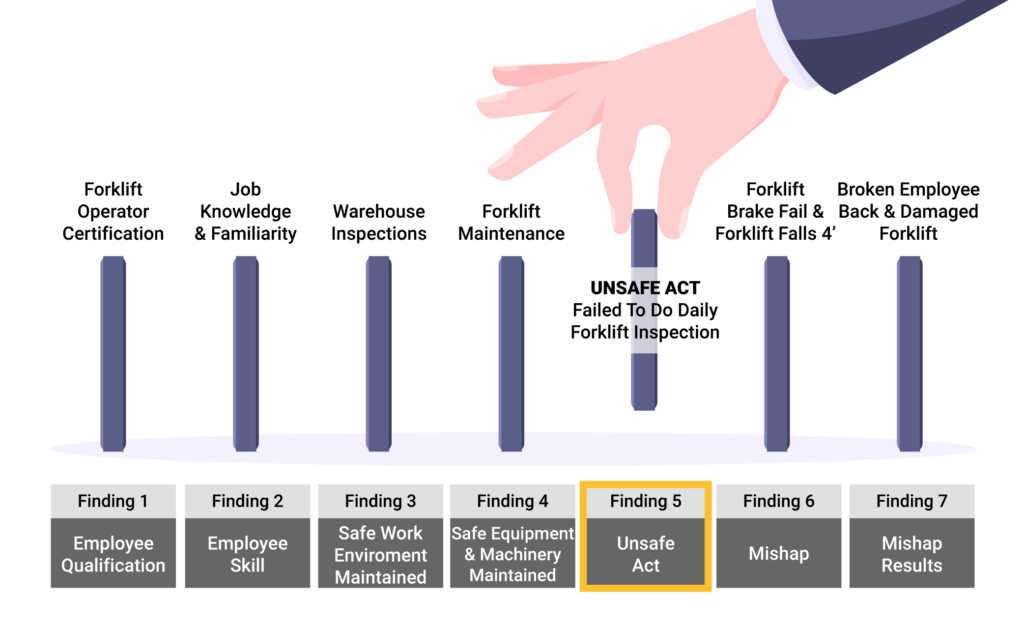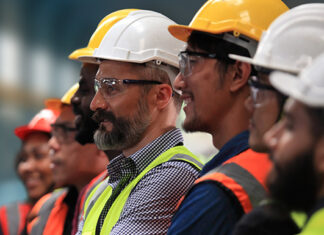Supervisors wear many hats, including being an impartial accident investigator and hearing, “Joey backed the forklift off the loading dock and is in the hospital…can you do the injury investigation report?”
Every incident injury report should include the facts of who, where and when. Now without pointing fingers and blame, the appointed investigator is stuck figuring out WHY Joey backed a forklift off the loading dock so you can prevent this from happening again.
There are many theories to determining a mishap’s root cause by using findings and causal factors. One method that helps the supervisor determine the “why,” is the Heinrich Domino Model.
Figure Out the Findings
Start with determining the findings. Findings are factual statements of the employee’s training, work environment, the management, the procedures and the equipment/machinery involved in the mishap. Once these factual statements are confirmed, the findings will need to include the employee’s chronological actions leading to the accident. For a visual, line the findings chronologically like standing dominos on their ends.
The causal factor will be the domino (finding) that will interrupt the knockdown effect and prevent the mishap if removed from the standing line.

Now Find the Root Factor
Now we need to determine WHY the employee failed to do the mandatory brake inspection – the causal factor for the mishap – which would have exposed the leaking brake hazard. A root cause analysis is a systematic technique that focuses on finding the real cause of a problem that will help you develop a recommendation to prevent a similar mishap, rather than just dealing with its symptoms. For example, if the operator failed to identify a forklift hazard, was it due to time allotted to do an inspection, lack of accountability or supervision, discipline, or was there a distraction or complacency?
Once you identify the causal and root factors, make a recommendation based on what you find. In this scenario, what can be recommended to prevent a forklift operator from failing to do a daily forklift inspection?
I hope you found this first installment of our Accident Investigation series helpful. Look for Part 2 where I will cover interviewing witnesses after an accident has occurred.

















